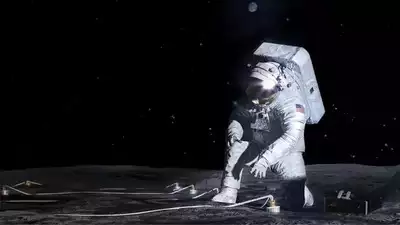THIS will be sent to the moon by NASA’s Artemis mission in 2026
NASA’s Artemis programme is slated to send humans back to the moon in a historic venture, and they’re taking a little bit of green with them. The objective of the mission, which goes by the name Artemis III, is to create a long-term human presence on the lunar surface. One scientific experiment that is particularly noteworthy among those scheduled for this historic expedition is Lunar Effects on Agricultural Flora (LEAF).

LEAF: Tracking the behaviour of plants in space
The LEAF experiment will be deployed by the Artemis III crew during their descent to the moon’s south pole.
LEAF, created by Space Lab Technologies, LLC, aims to solve the puzzles of plant development in the unusual lunar environment. From what we can tell,
Space photosynthesis: (LEAF) is a scientific endeavour of great significance. It will be the first to look at how plants respond to systemic stress, grow, and photosynthesise in the unique environment of space radiation and partial gravity on the moon. Imagine tiny green shoots against a harsh lunar background, straining resolutely for the far-off sun. This project has the potential to significantly advance our knowledge of extraterrestrial life.
NASA
Two purposes will be served by the data collected by LEAF: nutrition and life support. During prolonged lunar missions, scientists want to learn more about how plants cultivated on the moon may support human nutrition and survival. Could future astronauts be fed by these crops on the moon?
Not the initial vegetation LEAF participants won’t be the first plants to live on the moon, but their research might provide important new information on whether lunar farming is feasible. In 2019, China did, in fact, send cotton plants to the far side of the moon.
There are two other instruments on board.
LEAF isn’t flying alone, however. Two more instruments will be carried by the astronauts of Artemis III:
The LDA, or lunar dielectric analyzer, This device will measure how well the top layer of dust and gravel on the moon, known as lunar regolith, conducts electricity. Why? Future lunar research depends on our ability to comprehend the moon’s underlying structure and identify potential ice deposits.
Lunar Environment Monitoring Station (LEMS): After being deployed, this collection of self-contained seismometers will search for moonquakes for a maximum of two years. We may get important insights into the genesis and development of the moon by using LEMS to characterise the regional structure of the moon’s crust and mantle.
The path ahead
An important step towards humanity’s return to the moon is represented by Artemis III. The south pole, which is abundant in water ice, offers hope for manned outposts in the future, even if the precise landing location is yet unknown. These sensors will bridge the gap between the moon and Mars by addressing important research goals, as NASA’s Deputy Administrator Pam Melroy emphasises.
Following Artemis II, which will see humans orbit the moon without touching down, comes Artemis III, scheduled for 2026. We are getting closer to discovering the mysteries of our planetary neighbour and opening the door for interplanetary travel with every expedition. Once just a fantasy, lunar farming is now a possibility, a verdant haven among the moon’s desolate landscape.







